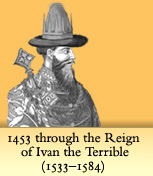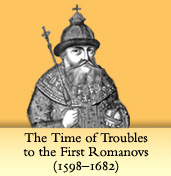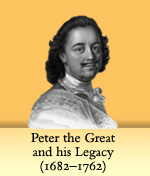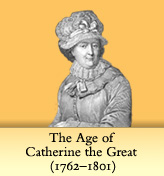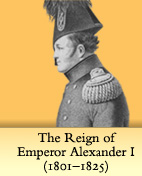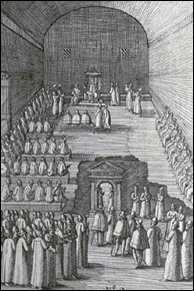
Long before the terms westernization, modernization, or globalization
came into use, these forces had already exerted their pull on Russia.
In the course of the 18th and early 19th centuries, this Orthodox
tsardom, emerging from 500 years of near insularity,
developed into a modern, global empire.
First and foremost, this process demanded direct engagement with western European
countries. Russia eagerly absorbed their technology and their culture, and its
elite strove to become a population of Russian Europeans, actively involved in
the affairs and destiny of their continent. In the 18th century, Russia took
its place as a major European power with a global agenda by successfully battling
Sweden, Turkey, and Poland. At the same time, having already expanded into Asia
and even touching the Pacific, Russia engaged non-European parts of the world
in a variety of ways – some admirable, some deplorable, and some both – through
trade, diplomatic and cultural exchange, scientific exploration, territorial
conquest, exploitation of resources, and encounters with native peoples.
When Peter the Great founded St. Petersburg as a “window on Europe” in 1703,
he intended the city to symbolize Russia's new direction. This website, illustrated
with materials from The New York Public Library's collection of Russian and east
European materials (one of the most comprehensive outside the region), explores
Russia's exposure to and interaction with the larger world, as well as the significant
role the new cosmopolitan capital played in this evolution.
Russia's engagement with the world (both eastern and western) would pose a myriad
of cultural, religious, ethical, ethnic, and political questions, which are debated
to this day not only by Russians, but by all who are involved in the issues and
controversies surrounding empire.
This website, based on an exhibition of the same name (on view from October 3,
2003 to January 31, 2004, and in a revised configuration from February 20 to
May 22, 2004, at The New York Public Library's Humanities and
Social Sciences Library), coincides with the 300th anniversary of the founding
of St. Petersburg.
Major underwriting support for this exhibition has
been provided by a generous gift from The Boris Jordan Family.
Additional support has been provided by the Samuel H. Kress Foundation and the
National Endowment for the Humanities.
Special thanks to Mrs. Charles Wrightsman, the Trust for Mutual Understanding,
Jacqueline and John P. Rosenthal, Irwin T. and Shirley Holtzman, Grace
Allen, Mrs. Daniel P. Davison, The Harriman Institute at Columbia University
in the City of New York, and an anonymous donor, for generous gifts in support
of this exhibition.
Support for The New York Public Library's Exhibitions Program has been provided
by Pinewood Foundation and by Sue and Edgar Wachenheim III.
This website is made possible by Sue and Edgar Wachenheim III and by the Bertha
and Isaac Liberman Foundation, Inc. in memory of Ruth and Seymour Klein.

|
|
|

Russia
Engages the World is organized into five sections,
each of which considers Russian and world history during a given
period:
1453 through
the Reign of Ivan the Terrible (1533-1584)
The
Time of Troubles to the First Romanovs (1598-1682)
Peter
the Great and His Legacy
(1682-1762)
The
Age of Catherine the Great
(1762-1801)
The
Reign of Emperor Alexander I
(1801-1825)
Each section offers
an overview, with brief summaries and selected images. For visitors
who wish to explore in greater detail the connections between
Russian and world history and culture, each section also contains
essays providing further historical background, excerpts from
contemporary documents, brief biographies of notable personalities,
explications of salient themes, descriptions of significant events,
and additional illustrative images. Other resources (including
a bibliography, related links, chronology of events, and glossary)
are available throughout the website.
|
|

